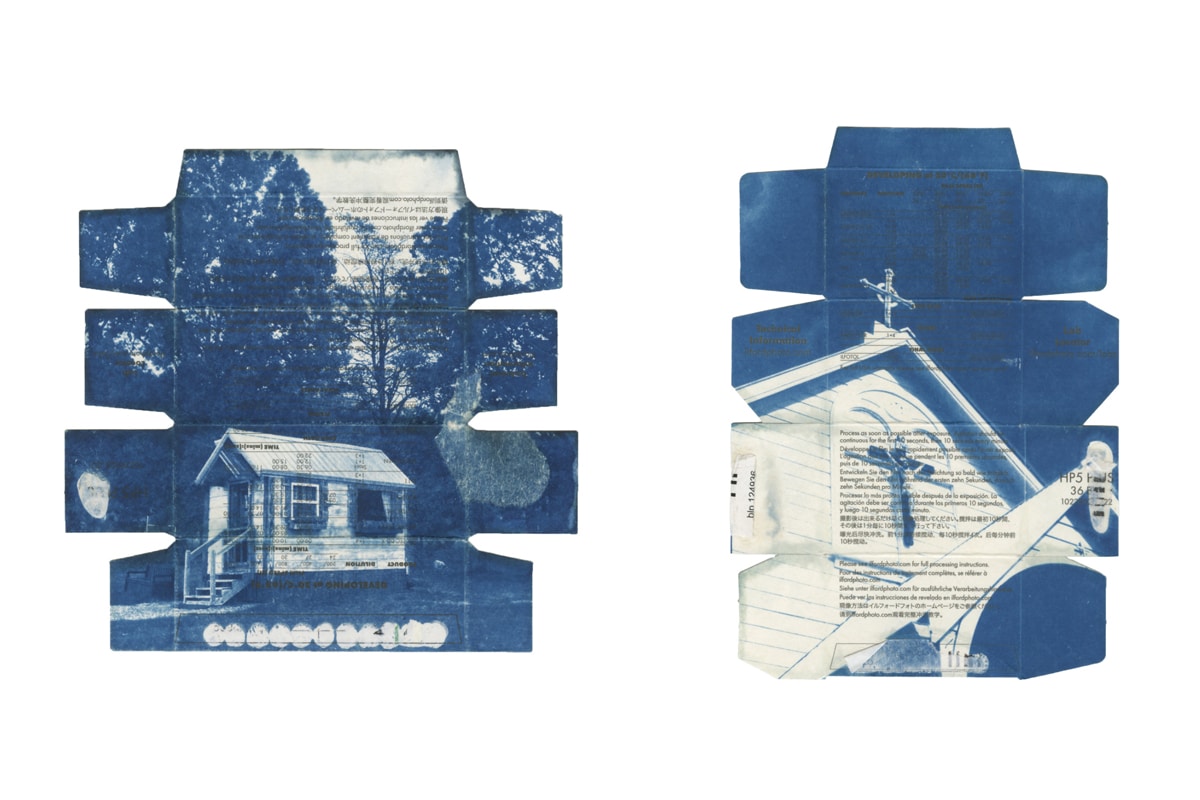Just what is an infographic, anyway?
An infographic, at its core, is a visual representation of information — literally, an information graphic. It’s able to convey complex information in manner that’s both engaging and time-saving. Read on if you’re looking for guidance on how to create infographics of your very own.
1. Define Your Goals
So you want to design an eye-catching infographic to present some interesting or informative statistics to readers? That’s fantastic! But before you go crazy designing fancy graphics and laying out your data, there are some very important things to figure out. The first and foremost is answering this question: Why are you creating an infographic in the first place? Determining the goals of your project will shape your design process accordingly.
You’ll want to set some realistic and specific goals around how your infographic will communicate data to your audience. Ask yourself the following questions:
- Is my topic too broad or too narrow?
- Will it confuse people with its scope?
- What problem am I solving, and is it relevant to my audience?
- What conclusion do I want the reader to come to?
- What is the tone I’d like to set?
- How will the visuals and information work together?
2. Tell a Story
Telling stories is one of the fundamental ways we share information. The right narrative can really bring the reader in and keep them engaged, and your story can make or break your design. Storytelling helps to cut through the clutter of data and keeps the focus on the message. Your infographic’s story should influence the design—not the other way around. Keep it short, include a great title to catch their attention, and deliver content in a linear fashion. Show, don’t tell.
Creating an outline before you get started can help you set your goals, stay on track, and ensure your infographic tells a clear and concise story. Stick to the outline and you’ll have a much easier time producing a quality layout that sells your audience on what you are presenting them with.
3. Gather Your Data
Before you can present any information to readers, you’re going to need to find data. Whether you get data from a client or you are compiling it on your own, chances are high that you’ll be digging through a fair amount of information before you’re done. That means one thing: it’s time to dig in and do some serious research. Don’t rush this step. Accurate information is essential and without it your creative won’t work as intended.
Don’t skim the data. Read it and learn from it. You might find some really fascinating information in the source material you weren’t aware of even if you consider yourself an expert on the topic. All of this information is the most important part of the infographic, and should not be approached casually.
Keep what matters and leave the rest. You want only information that directly pertains to the creative you are making. If you’re making an infographic about dog adoption and how it positively influences lives, you don’t need to include the ins and outs of every single dog breed, their dietary preferences, or how often a breed sheds. Keep your focus on the information that moves you toward your goals.
4. Verify Your Sources
Treat all of your research the same way you would approach an essay or project in school; the infographic is not credible if your sources aren’t. Remember that not all sources online are created equal, and verifying the accuracy of anything you find on the internet is a very good idea.
If your design is intended for newspapers or similar publications then you should also attempt to frame the information in a unbiased way, and include even information you may not personally agree with. Fact check every single item you intend to incorporate into the design. You don’t necessarily need to cite your sources on the design itself (although this is often still a good idea), but you should be sure to present truthful and accurate information.
5. Build a Wireframe
Now that you have the purpose and data for your infographic mapped out, it’s time to start laying out your conceptual design. Most professional designers approach this step with the tried-and-true method of using a wireframe.
A wireframe is basically the skeleton of a piece of creative, and it should always be the first step in your design. Laying out where graphics and text are presented before you start designing can save you a great deal of potential frustration later on in the creative process. Think of your wireframe as a map — you wouldn’t drive somewhere new without mapping out your route first, so you shouldn’t design something new without a wireframe to guide you along either.
You also don’t need any fancy programs for this step, either. A piece of paper and a pen are a more than an adequate set of tools in a pinch (some even prefer this method, myself included). The key here is to make sure the flow of your composition makes sense and won’t be confusing to the reader. If something isn’t clear to you, re-frame the information until it is, and you’ll be on track to really capture attention in a meaningful way.
6. Keep Things Creative
Especially when it comes to presenting information to online audiences, whose attention spans may be brief, visual information can sometimes be more impactful and easily remembered than plain text. Keep this in mind as you consider the visual design of your infographic. There are a wide variety of methods to present infographic data (pie charts, flow charts, diagrams, maps, graphs, and countless other options), and you can incorporate any of them into your final product.
Think outside the box—creativity is just as important as data when it comes to a good infographic. Instead of a simple photo with a paragraph of text added on top, why not try some custom icons on a clean and colorful design, like in this example from Turkish Airlines? The end result is easy to read and really grabs your attention thanks to the effective use of every element within the design, including the white space framing the information.
As a creator, you’ll probably relate to our own animated infographic about the schedules of artists on a personal level. Note how the data is presented without being convoluted and confusing and tells a visual story with a clear beginning, middle, and end.
7. Set the Tone
The tone of your infographic should match the mood of the information you’re sharing. If you’re working on a project that’s intended to be serious, you most certainly do not want to be adding puns and cheeky one-liners in every line of text—nobody will take it seriously. Keeping your tone appropriate to the content is a key factor in how your infographic is received.
You can still be creative in this process! Try to avoid clunky phrasing when there’s a way to present the material more intuitively. If your infographic reads like you copy-pasted the text from an instruction manual, you might not hold the reader’s attention for long. Instead, consider the perspective of the audience and adjust for more positive results.
8. Show, Don’t Tell
To design the best infographics possible it is extremely important to remember that if you can present information visually rather than via copy, you should always attempt to do so. Illustrations, graphics, icons, charts, and other visual assets all make for more engaging ways to present information than simple blocks of text. Not only is this more interesting and memorable for the reader, it will strengthen your overall design as well. Text should be used to complement the design rather than acting as the focal point.
We recommend keeping your text information on a separate layer in your working file. That way you can simply toggle the text layer on and off while you design your infographic template and determine if you can still understand the image without the presence of text. If you can’t make sense of your infographic without any of the text present, neither can your audience.
9. Choose a Great Font
Just because you shouldn’t rely on text more than imagery doesn’t mean that you don’t need to worry about text at all! The font you choose is an extremely important part of your design, and can make a significant impact on its readability. The choice of typeface should always complement your design, as well as any other typefaces used in the graphic, or you risk it detracting from the overall impact. You don’t want your hard work to miss the mark over a bad font choice.
Avoid fonts that are hard to read (and absolutely do not use Comic Sans or Papyrus for any reason) and you’ll be fine. Spend some time browsing Google Fonts for inspiration. Their library is virtually overflowing with fantastic options to help inspire your typography choices. It makes finding stylistic options that perfectly suit your design goals is a breeze, which can save a great deal of time.
10. Carefully Consider Color
The vast majority of infographics tend to be used online. This means that you’ll need to choose colors that suit a screen display rather than a newspaper. Keep in mind that your infographic may be shared on social media platforms like Facebook and Twitter, which typically have white backgrounds and loud colors. Avoid extremely bright hues that stress the eyes and stick with tones that are pleasant and warm.
Take the time to come up with a nice palette that draws the reader in. A good rule of thumb is to stick with no more than three or four colors. If you need additional colors beyond that primary palette, consider shades or tints of the main colors.
Something else to keep in mind is the fact that your online infographic will almost certainly be viewed on mobile devices as well as on computer browsers. The majority of your audience will be looking at your creation via their smartphones, so you will want to be certain that your choices for colors are not garish or difficult to interpret visually. And if color schemes are not your strengthm there are many useful tools out there to help make the selection a bit easier.
11. Leave Some Room
Avoid the temptation to cram too much information into your image and leave no breathing room. Just as aggressive colors can be a deterrent, readers don’t tend to gravitate towards designs that are difficult to read. Refrain from overcrowding, and give your design some white space so that the reader can take in all the details. With a bit of extra space, your creative will look much more professional, more organized, and cleaner.
If you are uncertain how much white space to use, take a look at current design trends to see what the majority of creators are doing with their own works. If nearly everyone is padding their content by 40 pixels it is probably a good idea to emulate that approach in your own design.
12. Take a Walk
Overworking yourself is not going to help your design. It’s important to take a step back every couple of hours to unwind. Infographics take a fair amount of time to produce, and it’s a good idea to give yourself some room to recharge throughout the creative process.
Stand up, stretch, and have a little break. Walk the dog. Play with the cat. Frag some noobs on Overwatch. Whatever you choose, your brain will thank you. Stepping away for a little while can also help you see your work with fresh eyes.
13. Simplify Your Work
There is such a thing as too much information in an infographic. You want to inform the reader without overwhelming them. Avoid any unnecessary information and instead try breaking down all of your data into as few points as possible.
Try to limit yourself to no more than six main points, and expand on those six points with information relating only to them. If a piece of information doesn’t fall within those six areas, don’t include it.
14. Check and Double Check
Proofread and proofread again. When that is done, proofread one more time. Continuously go over your work to check for errors and to ensure that your information is spot on.
If you deliver something with mistakes or typos, you won’t leave a great impression on your client. Even worse: the client doesn’t notice either, and the infographic is published. Grammar and spelling are important. If your editing skills aren’t that great, find someone you know who can help.
15. Share as You Work
Don’t wait until you’re done to test your infographic ideas on an audience. You might understand your design, but your readers might not. By sharing often and early, you can prevent needing to completely redo your work. Ask coworkers or friends to look over your design as you work on it. Get their input and make modifications based on their feedback.
16. Add to Your Portfolio
Now you’re ready to share your design with the world! Once you’ve mastered the art of the infographic, be sure to include it in your online portfolio website.( In need of some inspiration? Check out some of these amazing design portfolios.)
Tools of the Trade
With all of the above in mind, you still need a way to actually create your infographic. There is no truly “right” design tool for the job, and those comfortable with programs like Photoshop, Illustrator, other Photoshop alternatives like GIMP, or other design software will have plenty of success designing their graphics.
There are also a number of great programs with features designed specifically to create stunning infographics. Most offer a free infographic maker for those creative types who are strapped for cash, though if you can splurge for their premium offerings your ability to produce exceptional graphics increases tenfold. Below are some of top-of-the-line options:
1. BeFunky
In addition to a photo editor and a collage maker, BeFunky also includes an infographic creator that allows you to easily customize your designs. With an infographic template selection that makes life even easier, you can adjust your theme, icons, and images as well as colors, text, and layout. After that it’s a simple matter of saving and exporting.
While BeFunky’s free option is great, the premium version of the app is recommended for people looking to create a lot of high-quality infographics.
2. Visme
Visme is a fantastic option for those looking to produce beautiful infographics in a very short amount of time. This free infographic maker gives you access to over 100 fonts as well as millions of images and thousands of great icons.
In addition to all of that, Visme allows for video and audio imports to take your infographic design to the next level, while the ability to animate your work ensures the reader will be engaged. The free option for this app will give you access the the bulk of its features, but the premium plans give access to more advanced features.
Like other programs on this list, Canva offers a free infographic maker option as well as a more advanced feature set. Included in its offerings are powerful and easy-to-use tools suitable for just about any sort of design task (think flyers, pamphlets, brochures, and posters), though it really shines when it comes to infographics.
Canva’s library includes a wide range of fonts and design elements, as well as premium assets available should the need arise. It can be used in-browser as well as through a mobile app.
Google Charts is an enormously powerful and totally free tool. It gives you the ability to choose from a variety of chart types, and provides the designer with a significant amount of flexibility. You can configure your charts to match your website’s tone, look, and feel, using the same tools that Google employees utilize. As a Google product, it is accessible anywhere you happen to be, and you can share your work in real-time with your colleagues. This makes Google Charts one of the most flexible tools on the market and able to meet nearly any need you have. It might just be the perfect option to design your next infographic.
5. Piktochart
Piktochart can turn boring data into visually arresting imagery with minimal effort. The editor has numerous features to streamline your creative process (such as pre-loaded graphics and icons, color schemes, and fonts), and utilizes a handy grid-based template that makes it a breeze to align and resize your assets without sacrificing quality. It all adds up to a fantastic infographic creator. There’s even a team option should you require it for office environments.
Wow the Crowd
Regardless of which tool you choose to produce your next amazing infographic, as long as you stick to the basic rules outlined above you should have no trouble reaching your audience exactly the way you want. Let your personality influence the composition and a clear and concise design will show through.
Above all, the most important thing to remember is this: enjoy the process. You’re going to be much more confident and able to really sink your teeth into your work if you truly love what you are doing and believe in it. Now go forth and show the world some impactful and imaginative and creative infographics!












